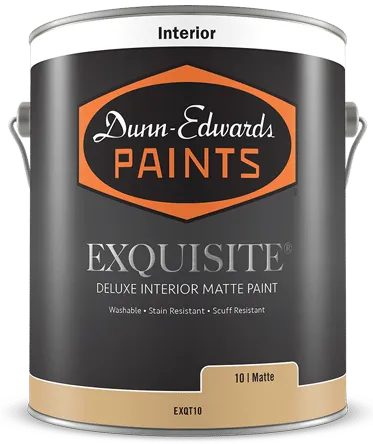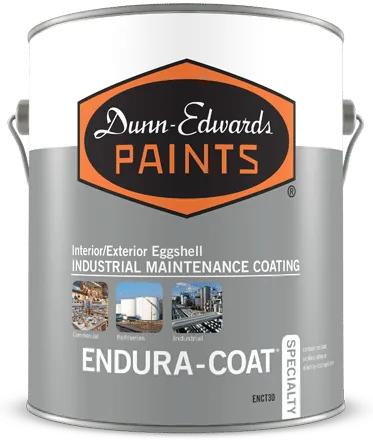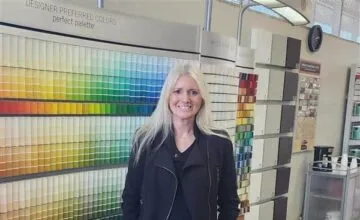How to Paint Galvanized Metal
12/04/2015 | Dunn Edwards |
Painting galvanized steel requires careful preparation and the right products to ensure long-lasting adhesion and durability. This guide explains the galvanization process, proper surface preparation, recommended primers, and the best paints to use.
What is Galvanization?
Have you ever wondered why certain metals in the environment appear to be impervious to corrosion? These silvery, spangled metals withstand the test of time, resisting corrosion without any protective coating applied.
In fact, a protective layer of zinc (Zn) is applied to the steel surface through a process called galvanization. The most common method is hot-dip galvanizing, where the steel is submerged in molten zinc to form a durable, protective coating.
The purpose of the zinc immersion is purely for the preservation of the steel. Not only does the zinc coating protect the steel by creating a barrier, but it also serves as a sacrificial anode in the event the bare steel is exposed to the environment through a scratch or break in the zinc.
Galvanization works similarly to a zinc plate protecting a submerged boat motor. The zinc sacrifices itself to prevent steel corrosion.
The Galvanization Process
The hot dip or immersion process is the most common method for galvanizing steel. This approach creates a complete and heavy zinc coating, offering the highest level of corrosion protection. It’s commonly known as batch galvanizing or after-fabrication galvanizing, and it’s ideal for steel used in highly corrosive environments.
Steps in the Hot Dip Galvanizing Process
- Surface Preparation
- Remove all oxides and surface contaminants
- Use solvent cleaning (SSPC-SP1), abrasive blasting, or caustic cleaning
- Rinse thoroughly with water
- Pickling
- Immerse the steel in hydrochloric or sulfuric acid to remove mill scale
- Rinse with water again after pickling
- Fluxing
- Clean off residual oxidation by immersing the steel in zinc chloride and ammonium chloride
- This stage prepares the steel for bonding with molten zinc.
- Galvanizing
- Dip the steel into a molten zinc bath heated to 820–860°F
- The zinc quickly reacts with the steel surface to form a durable alloy layer
- Cooling
- Remove the steel from the bath
- Allow it to air cool or water quench, depending on the application
Alternative: Light Galvanizing or Zinc Electroplating
Light galvanizing is used in less demanding environments. This includes in-line galvanizing (ILG) or zinc electroplating, where the steel is dipped in an electrolyte solution of zinc sulfate.
- This process plates a thin zinc layer onto the steel
- It allows for precise coating control
- The result is a bright, spangled finish that looks clean and uniform
Note: Light galvanizing usually requires extra protective coatings, especially for outdoor use
Directions for Painting Galvanized Metal Properly
Galvanized steel is often left unpainted, but when coatings are needed, proper preparation is essential. Letting the surface weather outdoors can help remove lightly adhered oxides naturally. Whether the steel is aged or new, follow these steps for best results:
1. Prepare the Surface
- Clean the surface thoroughly with a degreaser
- Use a brush-off blast (SSPC-SP16) or apply a chemical etching solution
- If you use an etching solution, rinse it off completely
- Allow the surface to dry before moving to the next step
2. Apply the Correct Primer
Not all primers work for painting galvanized metal. Avoid alkyd or oil-based primers. These can react with zinc and trigger saponification or a chemical reaction that forms a soap-like layer and causes the paint to peel or delaminate.
Instead, use a non-alkyd, high-performance acrylic bonding primer. This ensures proper adhesion, which is more important than using a rust preventative.
Recommended Primers for Galvanized Steel
- ULTRASHIELD® Galvanized Metal Primer
- Galv-Alum
- Sanitile 120 and Galoseal (Carboline)
- XIM UMA (Rust-Oleum)
- Devcryl 1440 (Devoe)
These primers bond well and support alkyd, acrylic, or two-component finish coats. All are available at Dunn-Edwards industrial tint centers and stores.
Kind of Paint Sticks for Galvanized Metal
Painting galvanized steel requires the right kind of paint for long-term adhesion. The best paint for galvanized steel is one that is formulated to bond to slick, non-porous surfaces. Avoid standard alkyd or oil-based coatings, which can fail due to chemical reactions with the zinc coating.
Use instead:
- Acrylic bonding primers (non-alkyd)
- Epoxy coatings
- Urethane finishes (for added durability)
Always check the product label to confirm it is designed for galvanized surfaces. Proper surface prep and compatible primer are just as important as the topcoat.
Common Mistakes When Painting Galvanized Metal
Many painters ask, “Can you paint over galvanized steel?” Yes — but only if you avoid these common mistakes:
- Skipping surface prep. Galvanized metal needs to be cleaned and etched to allow paint to grip.
- Using the wrong primer. Never use oil-based or alkyd primers. Always use a primer for galvanized steel that prevents saponification.
- Painting too soon. If the metal is freshly galvanized, allow it to weather for a few weeks to improve adhesion.
- Painting in poor conditions. Humidity or unclean surfaces lead to early peeling.
Proper preparation and compatible products are key to avoiding adhesion failure when painting over galvanized steel.
How to paint galvanized metal
Painting galvanized metal requires the right preparation and materials. This quick guide outlines each essential step to ensure proper adhesion, durability, and a clean finish.
- Clean with warm, soapy water: Use warm, soapy water to remove dirt, oil, and surface contaminants. This is crucial for helping the primer stick.
- Rinse and allow to dry completely: Rinse off all soap residue with clean water. Let the surface dry completely before moving to the next step.
- Wipe with ammonia and sand rough spots: Wipe the surface with ammonia to remove any remaining grease or oxidation. Lightly sand rough or shiny areas to improve paint grip.
- Apply a bonding primer and let it dry: Use a non-alkyd, acrylic bonding primer designed for galvanized metal. Allow it to dry thoroughly according to the manufacturer’s instructions.
- Paint the surface and let it cure fully: Apply your chosen topcoat — acrylic, epoxy, or urethane paints all work well. Let the paint cure fully before exposing the surface to heavy use or moisture.
Why Choose Dunn-Edwards?
Dunn-Edwards has produced premium paint products for over 90 years. With more than 120 company stores across five states and over 80 authorized dealers, we are proud to be the #1 choice of painting professionals across the Southwest.














